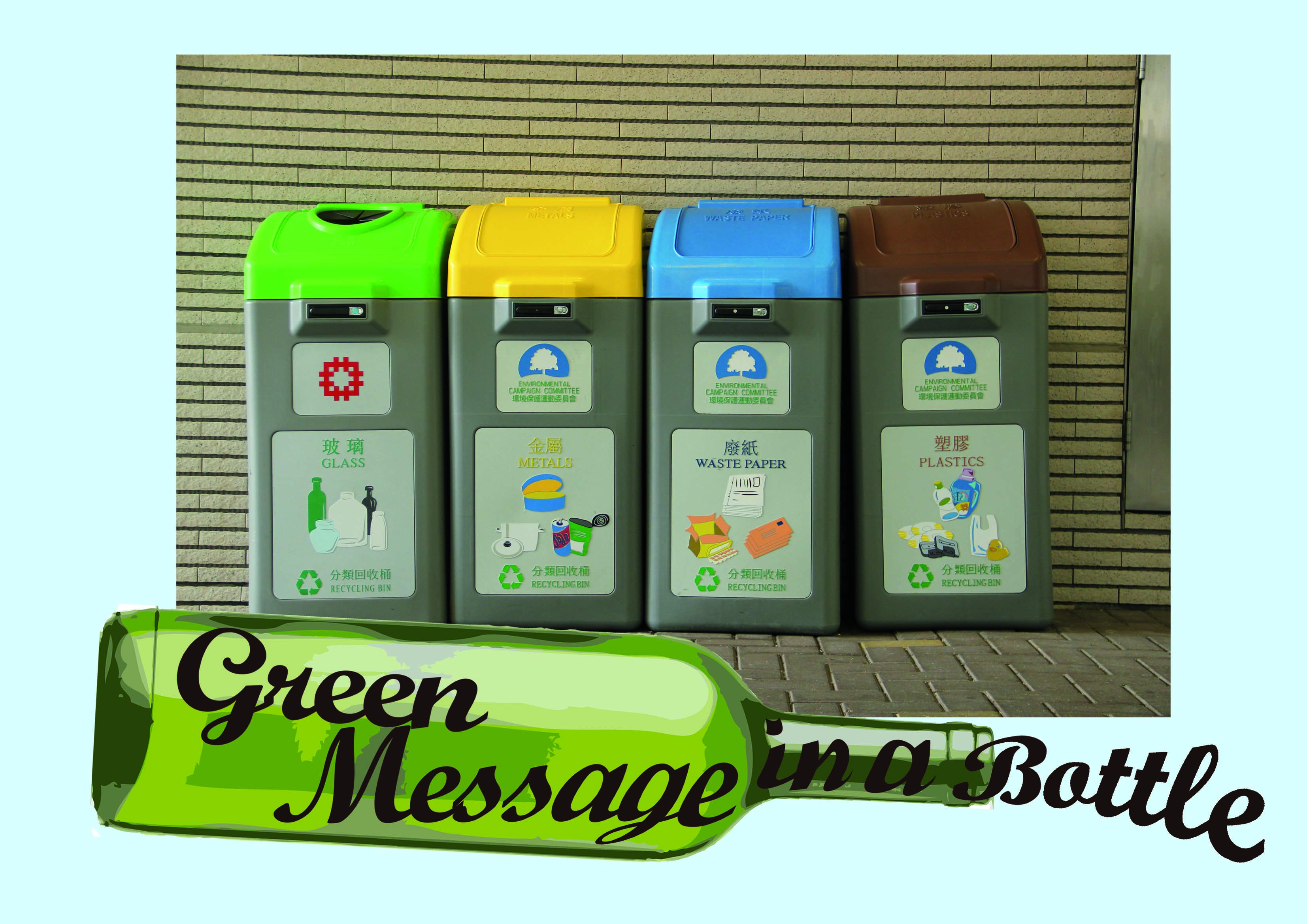Glass recycling finally gets going in Hong Kong
Reporters: Carmen Shih and Yvonne Yeung
Blue is for paper, yellow is for metals and brown is for plastics. Now there is a new colour for recycling bins – light green for glass bottles.
The new bins have been specially designed to receive empty condiment and drinks bottles as well as jam jars and other glass objects.
The first glass bins were introduced in January and they can be found alongside existing three-colour waste separation bins in six selected public rental housing estates in East Kowloon. They are part of a 12-month pilot programme to separate and recycle glass bottles collected from housing estates organised by the Environmental Protection Department (EPD) and the Housing Authority.
According to Alain Lam Kwok-lun, principal environmental protection officer of the EPD, the scheme is a good start for glass recycling in Hong Kong. “It would be best if glass could be locally produced, locally treated and locally used,” says Lam.
Although aluminium cans, paper and plastic bottles have been widely collected and recycled, there has been little interest in recycling glass in Hong Kong. This is because of the absence of a local glass manufacturing industry and the lack of a market for the used glass bottles.
In order to create a market and reliable outlet for recycled glass, the government funded the Hong Kong Polytechnic University to develop technology to produce eco-bricks from waste glass.
Eco-bricks are mainly made of fly ash, glass sand and recycled crushed stones. The glass sand replaces natural river sand as one of the raw materials. By using waste as a raw material, energy consumption can be reduced. The government’s goal is to reduce the territory’s energy consumption by 30 per cent.
And it is not just energy consumption that is a problem. Hong Kong’s landfills are filling up fast. Yet every day, the territory generates around 600 tonnes of waste glass bottles. In 2009, glass bottles accounted for four per cent of total solid waste. So the government needs to find ways to reduce the amount dumped into landfills.
The hope is to increase the recovery rate of all waste from 49 per cent to 55 per cent by 2015.
“After all, (waste reduction) is a subtraction,” Lam says, explaining why the government should take a leading role in expanding the market for waste glass.
An example is the government’s requirement that contractors use 100 per cent eco-bricks to win tenders for official projects. Eco-bricks have been used in various projects by the Highways Department, the Housing Authority, the EPD and local tertiary education institutions. “We have to encourage people to use or to buy eco-bricks at extra cost,” says Lam.
At present, there are two construction material companies producing eco-bricks and blocks. Besides eco-bricks production, waste glass bottles can also be washed and reused. Some hardware stores reuse them to hold solvents, while some condiment and sauce stores use them as containers for their products.
Waste glass bottles, which are usually seen as rubbish, can also be transformed and regenerated into pieces of artwork. In January this year, Green Glass Green, an initiative started by The Hong Kong Dumper Truck Driver Association, organised an exhibition at Oasis in Central, showing 47 pieces of glass artwork created by local secondary school students.







































